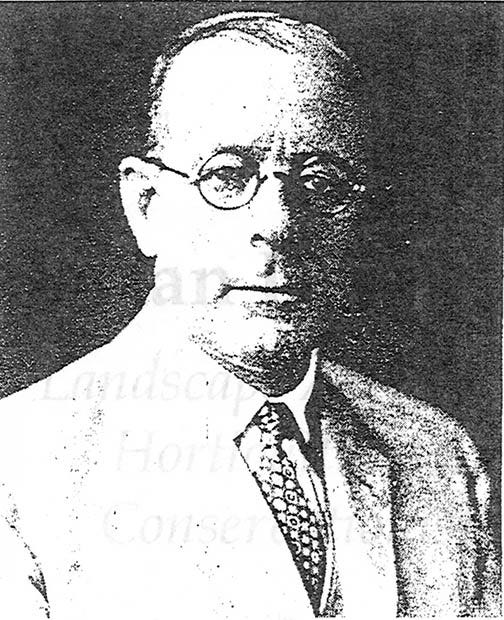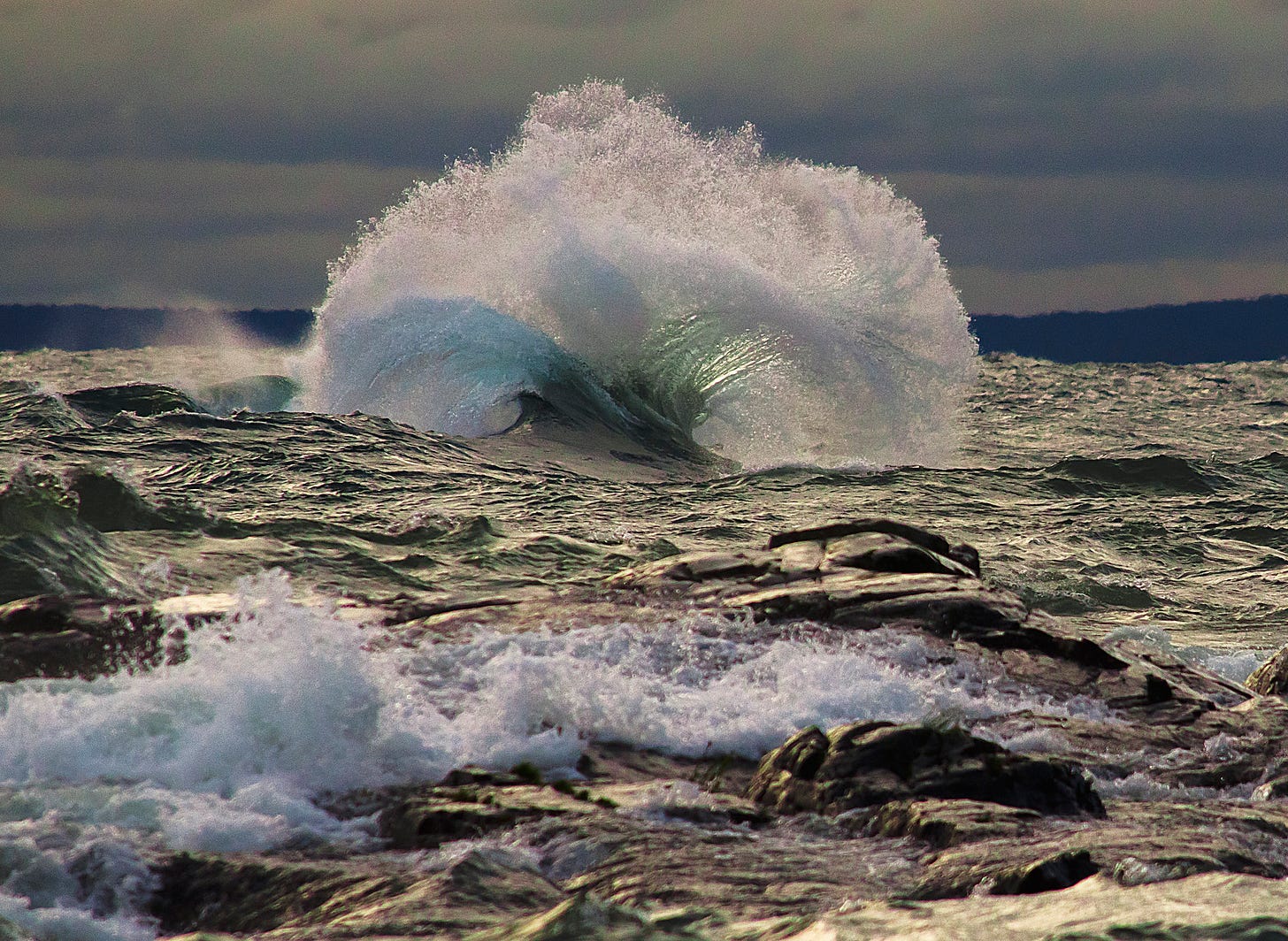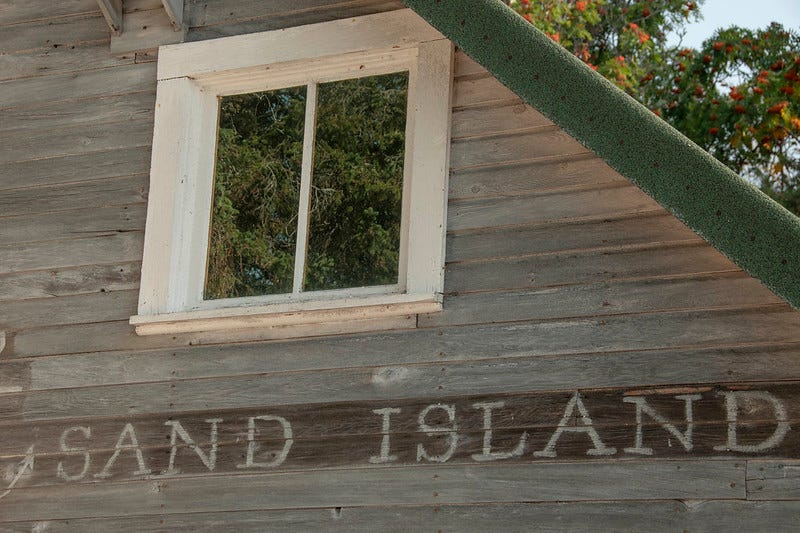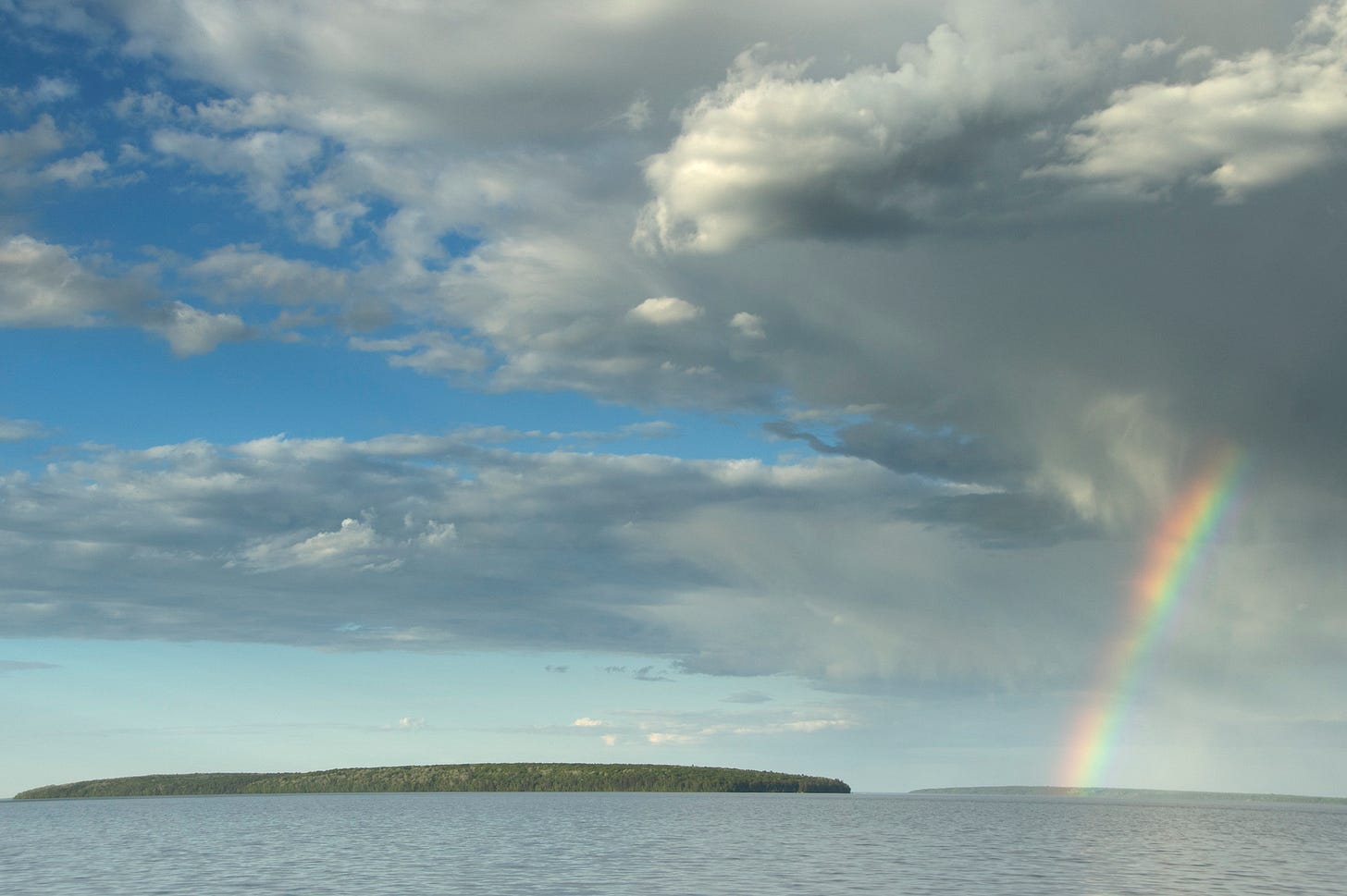The Tiffany Twist
A new national park proposal for the Apostle Islands flips history on its head. Is that a good thing?
In August of 1930, a spirited band of Chequamegon Bay boosters convinced the federal government to send a representative to the Apostle Islands to assess the area’s potential for a national park.
(photograph courtesy of the Kelsey Arboretum)
That representative, Harlan Kelsey, was an accomplished man - landscape architect, horticulturalist, a conservationist and consultant to the National Park Service. He would play a large role in the 1935 creation of Shenandoah National Park in Virginia and, even later, Florida’s Everglades National Park. It was hoped he might do the same to bolster the chances of creating an Apostle Islands National Park, an idea that had been bantered about at least since 1891 by local leaders.
Kelsey was brought to the crest of Ole Olson Hill to take in the grand sweeping vista. He was given an aerial view of the islands by plane and wined and dined aboard the 96-foot Madeline Island yacht the Lemora.
He said no.
Although his initial reactions were deemed positive, the written report of his visit published six months later dashed all hopes like waves on a rocky shore.
“What must have been once a far more striking and characteristic landscape of dark coniferous original forest growth ,” Kelsey wrote in his scathing report, “has been obliterated by the axe followed by fire. The ecological conditions have been so violently disturbed that probably never could they be more than remotely reproduced. … ”
There would be no Apostle Islands National Park, at least not yet.
In the case of Harlan Kelsey, the idea of a national park was pushed by local boosters and dashed by the federal government. Now, almost exactly 94 years later, it is a representative of the federal government, in the form of Congressman Tom Tiffany (R-WI) who is proposing a park and a confused public asking whether the idea should be embraced or dashed. Things have been flipped on their head.
Staff for Tiffany, the chairman of the powerful Federal Lands Committee, have appeared recently on short notice at town board meetings, Bayfield County Executive Committee meetings, and sent letters to various chambers of commerce and tourism boards announcing his plan to introduce a bill on July 24th to create the Apostle Islands National Park and Preserve.
The proposal was apparently drafted behind closed doors with little or no consultation with local entities, sportsmen, or park users. As far as can be seen, no one asked for it. No boosters, boosted. Tiffany did not come here and tour the park, meet with locals, or even ask anyone what they wanted. The top-down style bill has been presented as an all-but-done deal complete with a pre-written “letter of support,” sign here please and thank you. Good bye.
As might have been expected with this heavy-handed approach, some resistance has been encountered.
The “Apostle Islands National Park and Preserve Act” (no bill number yet assigned) seeks to change the designation of the Islands from its current “National Lakeshore” to “National Park and Preserve.” But the ramifications of that action go far beyond simply changing the name on a few park signs.
Elevating a place to national park status brings added attention and increased visitation. A recent study by the University of Maryland shows that visitation numbers increased an average of 21% among areas upgraded to national parks. Such an increase in the Apostle Islands would see the official numbers rise from about 300,000 a year now to around 360,000 people a year, bringing with it an economic boost to local business, Tiffany claims, to the tune of at least $100 million a year and over 1,000 added jobs.
No one disputes that more visitors means more money for the local economy. The question really isn’t about the numbers but what those numbers might mean beyond the cash registers of Bayfield and in the park itself.
On the face of it, increased revenue from higher visitation sounds like a good thing. But if the number of visitors goes up, shouldn’t the budget of the park go up as well to deal with the pressures of that increased visitation? Will the park need more campsites? More docks? More rangers? Many of the new visitors will be first-timers without experience on the big lake. Will that create a need for increased search & rescue personnel and equipment? Currently, the Apostle Islands National Lakeshore has just one Law Enforcement officer — one — to cover an area the size of Rocky Mountain National Park. Will the increased visitation require additional law enforcement staff? If so, where will the funding for those things come from? Currently, the budget of the lakeshore is rumored to be in line for a cut in the next fiscal year of 20-26%.
These all seem like reasonable questions. Unfortunately, there are no answers offered in the Apostle Islands National Park and Preserve Act, but it does come with that handy pre-written “Letter of Support” for people to sign and smile.
In another unexplained twist, the bill adds a layer of complexity by creating not just a park but a “preserve” as well. By definition, a “national preserve” is similar to a national park, still managed by the National Park Service, but entails fewer restrictions on its uses, for instance hunting, mining, oil exploration, even logging (all outlawed in a “national park”) have been allowed in some preserves.
The idea of adding national preserves adjacent to national parks has been around for years - early examples include Big Thicket and Big Cypress National Preserves in Florida created in 1974. Preserves came more clearly into public consciousness during the negotiations over the Alaska National Interest Lands Conservation Act (ANILCA) passed in 1980. Preserves were added to parks like Denali, Wrangell-St. Elias, Gates of the Arctic, Glacier Bay and others as a way to designate areas where hunting, trapping, and subsistence activities — not allowed in national parks — could still be practiced by Native Alaskans and others. The concept has also been used in the lower 48 states as well at places such as Great Sand Dunes National Park and Preserve in Colorado (there are currently national preserves in 11 different states) and is almost always a way of lessening the protections denoted in a “park.” In other words, a red flag.
The problem lies in defining what the preserve will and will not allow. Often the activities condoned in a preserve are set out by the particular legislation which establishes that preserve. In this case, there is no explanation for what that is, only a map showing where: Sand Island.
Why just one island? What is the purpose of the “preserve” on Sand Island? Is it for hunting? Under its current “National Lakeshore” status, hunting is already allowed on Sand Island and on pretty much all of the islands and the mainland unit of the park — some 42,000 acres — with some small exceptions. The bill would eliminate hunting on over 90% of those acres leaving only Sand Island open for sportsmen. Will hunters support a bill that reduces the number of acres for hunting in the Lakeshore by some 39,000 acres?
Is there another reason for using the designation only on Sand Island? Logging? Mining? Development of a lodge, a large marina, something else? Sand Island is (along with Basswood and Long Islands) one of the few Apostle Islands not covered under the protections of the National Wilderness Preservation System where such things would be prohibited. Is that why it was targeted as a “preserve” while the other islands and the mainland units are being considered for “park” status?
Unanswered questions hang in the air like a dark cloud.
No word on who asked for this. No word on additional funding. No explanation of the justification for the “preserve” on just a single island. Yet next week Representative Tom Tiffany has said he will introduce a bill no one seemed to ask for and few understand.
Does the Apostle Islands National Lakeshore deserve national park status? Maybe. What it certainly deserves is more than a pre-written form letter of support for unquestioning signatures. The original enabling legislation to create the Apostle Islands National Lakeshore was first introduced in September of 1965 by Gaylord Nelson. A long string of hearings over years were held generating over a thousand pages of public, expert, and stakeholder testimony, before passage of that bill on September 26, 1970. All of that to ensure that all voices were heard, and all questions asked and answered. Will there be such a process here?
A decision as big as changing the Apostle Islands National Lakeshore to a national park and preserve deserves a deliberate, thoughtful, transparent, in-depth, and inclusive process. All voices deserve to be heard and all the questions deserve to be answered.
Once locals were the ones clamoring for a national park and the government which said no. Today, it seems it is the government clamoring for a park without even asking what the public wants. Should we say no?
Let’s stop the topsy turvy Tiffany Twists, take a deep breath, and work together to ensure that whatever happens to the Apostle Islands is something all of us can agree on, or at least have a say in, and in the end is the best thing for what really matters here: the islands we love.
— Jeff Rennicke (all photography by the author unless otherwise noted)
— The opinions expressed are those of the author and do not necessarily reflect those of any other organization or individual.














This proposal seems like a solution in search of a problem. Thank you for sharing and for your detailed analysis!
Gracious! Such an odd situation. Thanks for bringing it to our attention. Serious discussions between citizens and government must happen.